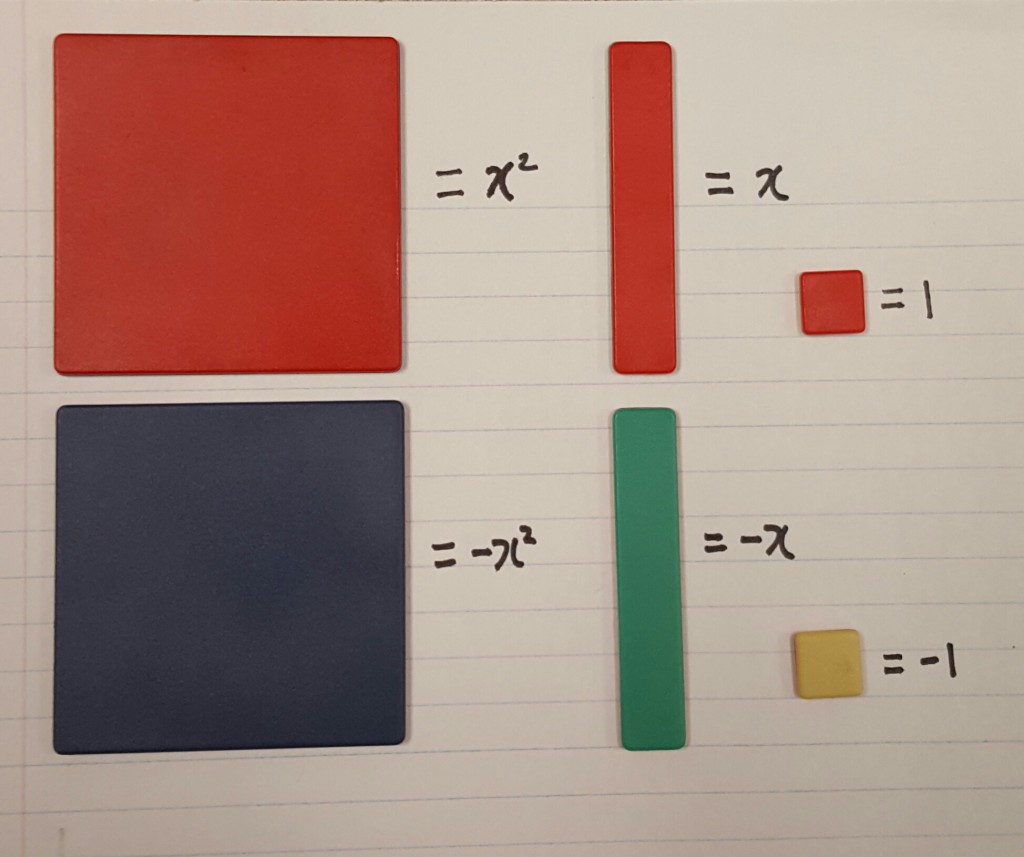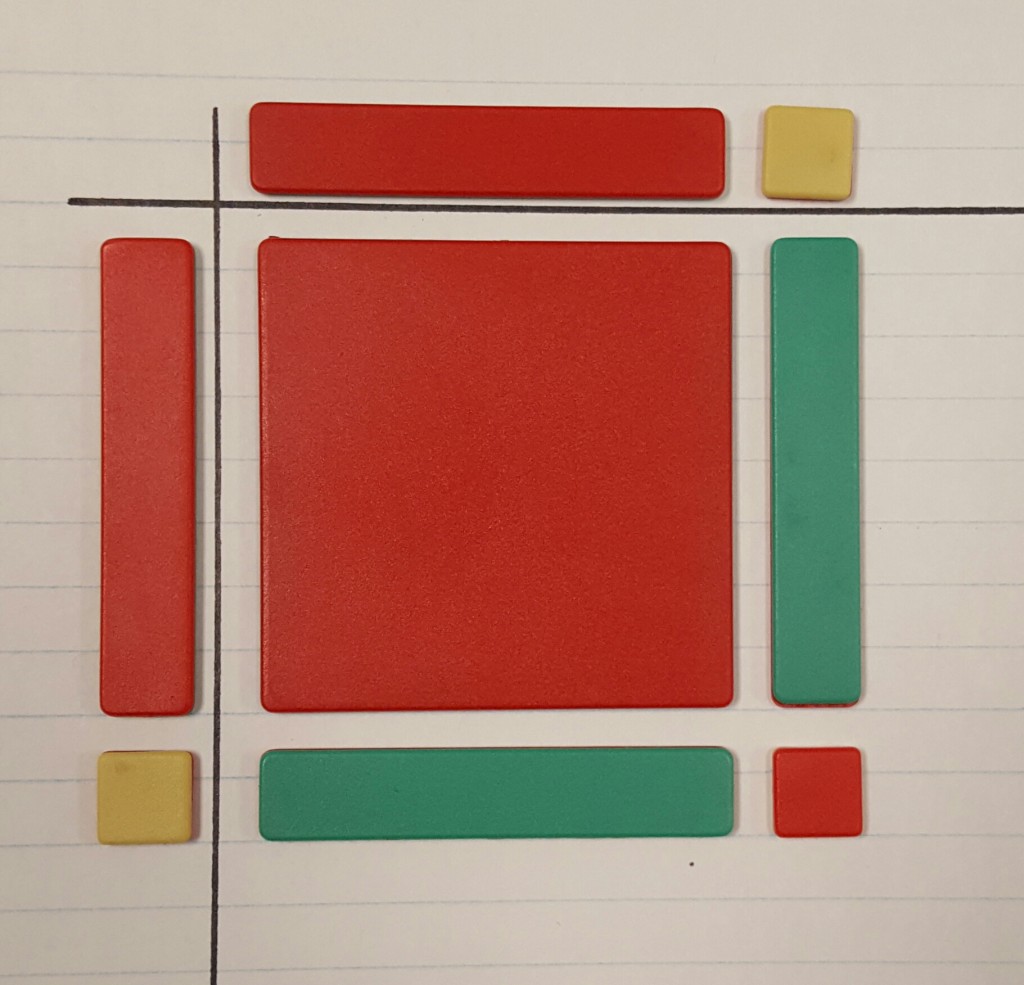https://youtu.be/8Pa0bGIge7g
Grade 10
Modeling Polynomials
Before using the algebra tiles to model the mathematical expressions, I chose each colours of the tiles to represent what it meant.
Key :
=
=
=
I expanded the expression in to
, because this makes it easier to understand why the algebra tiles are labled like that. There are one red stick and one red small square on each of the two sides. In the middle, there are red large square, two red stick, and 1 red small square.
=
=
=
This equation is similar to the prior. The only difference is that this equation has a -1.
To solve this equation, I expaned in to
.
=
=
I put a red stick and a red small square on the top side, and a red stick and a yellow small square on the left side. Then, I could know which alegebra tiles had to go in to the middle. A red big square, two sticks that are different colours, and one yellow small square.
=
=
=
=
=
I couldn’t model this expression because it was cubed, so I had to solve it by doing two steps. First, I wrote it down like this, . I multiplyied the two binomials together, and that gave me
. Then, I multiplied the trinomial and
. Finally, I simplified the expression, and the simplified expression was
.
Trigonometry
In math class, we are learning about trigonometry. From yesterday’s lesson, we learned that it is about a relationships involving lengths and angles of triangles.
The longest side, AB, is called the hypotenuse (hyp).
The side opposite the angle of A, AC, is called the opposite (opp).
The third side of the triangle, BC, is called the adjacent (adj).
Sin A = opposite / hypotenuse
Cos A= adjacent / hypotenuse
Tan A = opposite / adjacent
When using calculators, I could know the ratio by pressing the buttons ‘sin’, ‘cos’, or ‘tan’ .
To know the angle, I would press the buttons ‘sin-1’, ‘cos-1′, or tan-1’.
Analyzing Songs
https://youtu.be/G5_tqXY9sm8
Tell Tale Heart
This is what I did in English class. We read a short story “The Tell Tale Heart” and filled out this word document.






